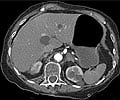Three studies published on bmj.com today explore the impact of Scotland’s smoke-free legislation.
Three studies published on bmj.com today explore the impact of Scotland’s smoke-free legislation. They show that legislation has reduced secondhand smoke exposure in both children and adults, but that achieving smoke-free homes remains a challenge.
The studies by researchers from the University of Edinburgh and NHS Health Scotland are being published to coincide with a media briefing "Toward a Smokefree Society" taking place at the Edinburgh International Conference Centre.Two studies measured the effect of the ban on secondhand smoke exposure among primary school children and non-smoking adults, using questionnaires and salivary cotinine levels (a by-product of nicotine).
In children, overall cotinine levels fell by more than a third (39%) following the ban, but this was statistically significant only among those living in a household where neither parent figure smoked or where only the father figure smoked. There was little change in reported exposure in pupils’ own homes or in cars.
The authors conclude that the legislation has had a positive short-term impact on young people’s health, but stress that further efforts are required to promote both smoke-free homes and smoking cessation.
In adults, cotinine levels fell by almost half (49%) in non-smokers from non-smoking households, but non-smokers living in smoking households continued to have high levels of secondhand smoke exposure in the home. Exposure was reduced in all public and work places, but not in the home or private cars.
Again, the authors suggest that further action is urgently required to support smoking households to implement smoke-free homes and cars. The third study explored the impact of the ban on attitudes and behaviours in affluent and disadvantaged communities across Scotland. Researchers interviewed 50 adults (smokers and non-smokers who lived with smokers) from all socioeconomic groups.
Advertisement
Few respondents thought the legislation had influenced their smoking in the home, and none thought it had affected smoking restrictions at home.
Advertisement
They recommend that future public health initiatives could include media campaigns and professional advice and support, particularly for parents, grandparents, and other carers, on how to develop more effective smoke-free strategies in the home and car.
These views are reiterated in an accompanying editorial by Professor Simon Chapman at the University of Sydney. He asks: will cars and homes follow bans on smoking in public spaces?
Several US states and South Australia have banned smoking in cars when children are on board, but homes remain the most significant source of exposure to secondhand smoke, often by unconsenting minors, he writes.
Although legislation against domestic smoking is unlikely, health professionals have vital roles in encouraging smoking households to implement smoke-free rules. Children should also be supported in their efforts to request their parents to at least smoke outdoors, he concludes.
Source-BMJ
LIN /J











